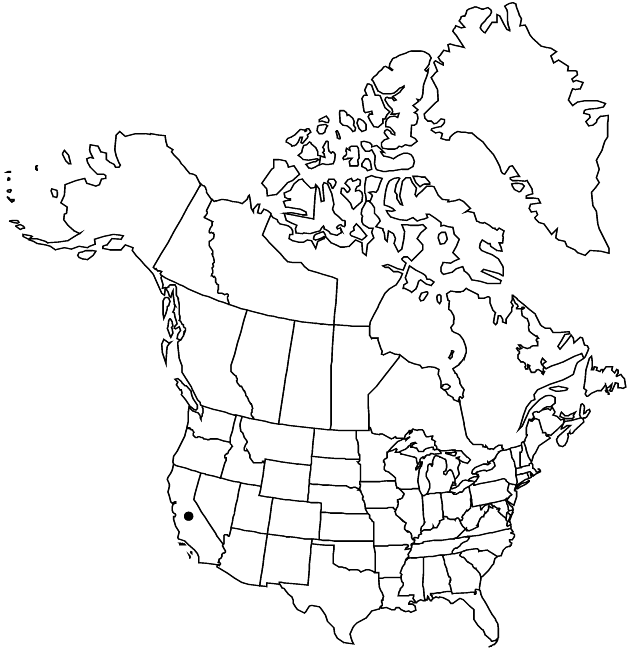Stylocline citroleum
Madroño 39: 125, fig. 4. 1992.
Plants 2–9 (–13) cm. Leaves broadly acute, mucronate, longest 6–13 mm; largest capitular leaves broadly oblanceolate to ± elliptic, 4–12 × 2–3.5 mm. Heads in dichasiform or proximally ± racemiform arrays, ± spheric, largest 4–5.5 × 3.5–5 mm, thickly lanuginose (dull, indument evident). Phyllaries ± persistent, elliptic to obovate, 1.5–2.5 mm, subequal. Receptacles clavate, 1.5–2.5 mm, heights 4–6 times diams.; scars ± evenly distributed, slightly sunken. Pistillate paleae: longest 2.5–3.5 mm, winged proximally and distally; wings elliptic to slightly obovate (bases acute), widest in median 1/3 of palea lengths; bodies (except midnerves) chartaceous; outermost paleae ± saccate. Functionally staminate florets 3–6; ovaries partially developed, (0.2–) 0.3–0.6 mm; corollas 1–1.6 mm. Cypselae 0.8–1 mm, compressed; pappi: staminate of (5–) 6–12 (–13) barbellate bristles 1.4–1.8 mm (proximal barbs longer, spreading).
Phenology: Flowering and fruiting Mar–Apr.
Habitat: Dry, open, relatively undisturbed, often crusted sandy or clay soils, gentle slopes, dry drainage banks, clearings in saltbush (Atriplex) vegetation
Elevation: 60–300 m
Discussion
Of conservation concern.
Stylocline citroleum is known from western Kern County; basis for an 1883 San Diego County report is likely extirpated or plants were mislabeled. It is fairly widespread on and near the former Elk Hills Naval Petroleum Reserve (D. F. Williams et al. 1998).
Stylocline citroleum almost always occurs with S. gnaphaloides and/or Logfia filaginoides. It is thought to be descended from hybrid ancestors (J. D. Morefield 1992, 1992b) and now appears to be fertile, morphologically uniform, and reproductively isolated from sympatric taxa. Character states place it sister to S. gnaphaloides.
Selected References
None.
Lower Taxa
"broader" is not a number."longest" is not a number.
